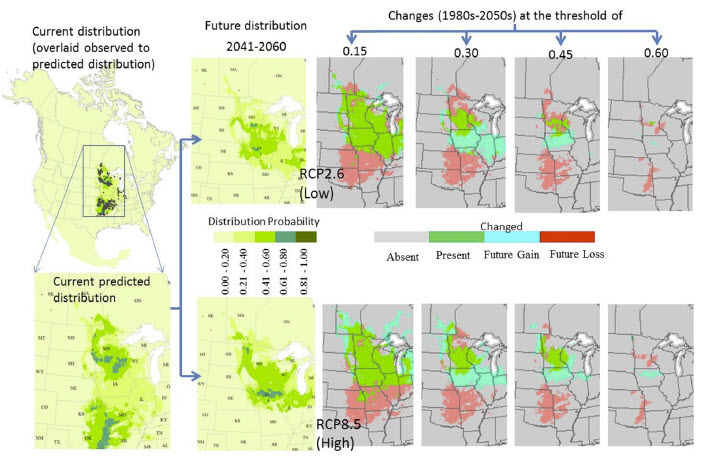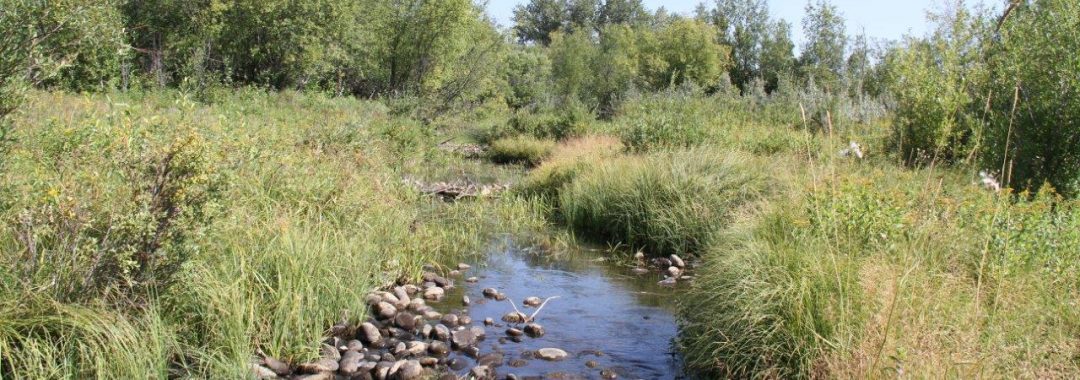Abstract:
Climate change is affecting many freshwater species, particularly fishes. Predictions of future climate change suggest large and deleterious effects on species with narrow dispersal abilities due to limited hydrological connectivity. In turn, this creates the potential for population isolation in thermally unsuitable habitats, leading to physiological stress, species declines or possible extirpation. The current extent of many freshwater fish species’ spatio-temporal distribution patterns and their sensitivity to thermal impacts from climate change − critical information for conservation planning − are often unknown. Carmine shiner (Notropis percobromus) is an ecologically important species listed as threatened or imperilled nationally (Canada) and regionally (South Dakota, United States) due to its restricted range and sensitivity to water quality and temperature. This research aimed to determine the current distribution and spatio-temporal variability in projected suitable habitat for Carmine shiner using niche-based modeling approaches (MaxEnt, BIOCLIM, and DOMAIN models). Statistically downscaled, bias-corrected Global Circulation Models (GCMs) data was used to model the distribution of Carmine shiner in central North America for the period of 2041–2060 (2050s). Maximum mean July temperature and temperature variability were the main factors in determining Carmine shiner distribution. Patterns of projected habitat change by the 2050s suggest the spatial extent of the current distribution of Carmine shiner would shift north, with > 50% of the current distribution changing with future projections based on two Representative Concentrations Pathways for CO2 emissions. Whereas the southern extent of the distribution would become unsuitable for Carmine shiner, suitable habitats are predicted to become available further north, if accessible. Importantly, the majority of habitat gains for Carmine shiner would be in areas currently inaccessible due to dispersal limitations, suggesting current populations may face an extinction debt within the next half century. These results provide evidence that Carmine shiner may be highly vulnerable to a warming climate and suggest that management actions – such as assisted migration – may be needed to mitigate impacts from climate change and ensure the long-term persistence of the species.
Citation: Pandit, S.N.*, Koriala, L., Maitland, B.M*, Poesch, M.S., and E. Enders. (2017) Climate change risks, extinction debt, and conservation implications for an endangered freshwater fish Carmine Shiner (Notropis percobromus). Science of the Total Environment 598: 1-11.
Predicted Change in Carmine Shiner Distribution given Climate Change Scenarios (RCP 2.6 top; RCP8.5 bottom) across various thresholds

Also Read:
*Lab members: Shubha Pandit, Bryan Maitland, Mark Poesch. Check out opportunities in the lab!

